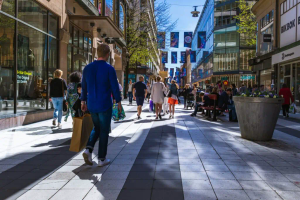Navigating the Unique Beauty of Madagascar: A Traveler's Guide to Getting Around

Nestled off the southeastern coast of Africa, Madagascar stands as a mesmerizing tapestry of vibrant cultures, lush rainforests, and diverse wildlife found nowhere else on Earth. As a traveler, getting around this stunning island nation might seem challenging, but fear not! This article aims to be your go-to guide on exploring Madagascar and making the most of your journey while respecting its delicate ecosystems and local communities.
Modes of Transportation
a. Domestic Flights: Madagascar’s vast size calls for domestic flights to reach different regions swiftly. Companies like Air Madagascar operate regular flights to major cities and tourist destinations, such as Antananarivo, Nosy Be, and Morondava.
b. Taxis and Taxi-Brousses: For shorter distances between towns and cities, taxi-brousses (minibusses) are a popular and affordable option. Taxis are also available in urban areas, though they tend to be pricier. Negotiating the fare beforehand is recommended.
c. Trains: Madagascar boasts a few scenic train routes that offer a glimpse into the island’s diverse landscapes. The Fianarantsoa-Côte Est Railway and the Antananarivo-Ambatondrazaka-Moramanga Railway are among the notable ones.
d. Rental Cars: In larger cities, you can find car rental agencies. However, keep in mind that road conditions may vary, and it’s essential to drive with caution.
Navigating the Road Network
Madagascar’s road infrastructure varies from well-paved highways to rough dirt tracks, depending on the region. When traveling by road, consider the following:
a. Plan Your Routes: Research and plan your routes in advance. Expect longer travel times, especially in remote areas.
b. Travel During the Day: It’s advisable to travel during daylight hours to avoid potential road hazards and reduce security risks.
c. Pack Essentials: Carry essential supplies like food, water, a first-aid kit, and extra fuel, especially on long journeys through remote areas.
d. Local Driving Habits: Be prepared for a unique driving experience, as local driving habits may differ from what you’re used to. Exercise patience and caution.
Island-Hopping Adventures
Madagascar’s pristine coastline and numerous islands offer fantastic opportunities for island-hopping:
a. Ferries: Regular ferries connect the mainland with popular islands like Nosy Be and Île Sainte-Marie. It’s recommended to book tickets in advance during peak travel seasons.
b. Private Boat Charters: For a more exclusive experience, consider chartering a boat to explore remote islands and secluded beaches.
Wildlife Safaris and Nature Reserves
To witness Madagascar’s incredible biodiversity up close, you’ll need to venture into its protected areas:
a. National Parks: Madagascar’s 20 national parks are home to unique flora and fauna, including lemurs, baobabs, and chameleons. Some renowned parks include Andasibe-Mantadia, Isalo, and Tsingy de Bemaraha.
b. Local Guides: Hire local guides who possess in-depth knowledge of the area and can enhance your wildlife spotting experience.
Respecting Local Cultures and Environments
a. Sustainable Tourism: Support eco-friendly and community-based tourism initiatives that contribute positively to local economies and conservation efforts.
b. Cultural Sensitivity: Respect local customs, traditions, and etiquette when interacting with Malagasy people.
Madagascar is a destination that captivates the hearts of travelers with its unparalleled beauty and extraordinary biodiversity. By understanding the various transportation options, respecting local customs, and embracing the island’s unique nature, you’ll embark on a memorable adventure, discovering the wonders of this unparalleled gem in the Indian Ocean. Remember, responsible travel is the key to preserving Madagascar’s natural splendor for generations to come.







